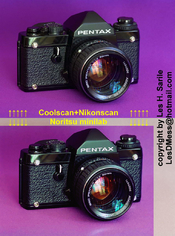Age old question when it comes to scanning color negatives - is it the film or the scanner. If you read enough posts here - and elsewhere, this is always the question. Myself, I have access to many scanners so I can always try a different one for comparison.
Here is an example of a perfectly well exposed frame of Kodak Gold 100 film scanned on the Coolscan compared to a Noritsu with all settings in auto and no post work applied except for combining the two and adding text.
 Kodak Gold 100-7_30-36 Coolscan-Noritsu
Kodak Gold 100-7_30-36 Coolscan-Noritsu by
Les DMess, on Flickr
I have scanned thousands of frames of various films with the Coolscans and occassionally compare results from many scanners. This doesn't happen to most scans I've had from the Noritsu but is one of the worst color failures I've seen over the years. If I didn't have the Coolscan, I would have been left with the same question you - and many others, have - is it the film or the scanner.




